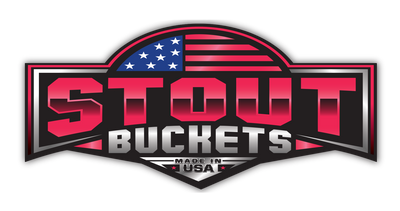Best Practices for Cleaning Stump Grinder Attachments

Homeowners with large properties depend on heavy-duty tools to keep their land manageable, and proper maintenance ensures those tools last. Stump grinders face harsh working conditions that can quickly wear down components when operators neglect them.
Dirt, sap, and compacted wood fibers build up on the machine after every task, and without proper care, its performance begins to slip. When you follow the best practices for cleaning stump grinder attachments, you keep the grinder running reliably, extend its service life, and ensure safer operation around your property.
Clear Debris After Every Use
Start by removing debris from the grinder after each use. Freshly ground wood chips, bark, and dust cling to the attachment as soon as it meets soil and roots. When operators leave this buildup on the machine, the materials absorb moisture, cause corrosion, and harden like concrete around moving parts. Removing debris thoroughly after every job stops small accumulations from turning into bigger problems.
Use a stiff brush, air compressor, or pressure washer on a moderate setting to knock away compacted debris. Pay close attention to the teeth and cutting wheel, where splinters and resin collect the fastest. Clear the underside and protective guards as well, since hidden corners often trap the most material.
This simple step saves time and allows you to complete more work. Clear material right away to prevent rust and resin from hardening, which makes the next cleanup easier. Homeowners who stay consistent with debris removal preserve both performance and efficiency, and their grinder cuts smoothly every time it tackles another stump.
Inspect and Maintain Cutting Teeth

The cutting teeth handle the toughest part of every grinding session. Sap, soil, and wood dust cling to the tips and edges, which dulls their bite. Keep those teeth clean to preserve cutting strength and maintain high productivity. Dirty or worn teeth force the machine to push harder, which strains the motor and shortens the life of the attachment.
After you clear debris, inspect each tooth closely. Look for cracks, chips, and dull edges. Scrub away resin and dirt with a wire brush or a tool built for heavy-duty cleaning. If a stubborn buildup remains, apply a safe solvent made for heavy equipment. Once the teeth are clean, you can spot any damage and decide whether to sharpen or replace them.
This maintenance routine turns regular care into prevention. Clean, sharp teeth cut faster, place less strain on the attachment, and use less fuel or power. For property owners who rely on a stump grinding attachment for tractor projects, sharp teeth keep every job efficient and protect the rest of the machine from unnecessary wear.
Protect Hydraulic and Moving Components
Hydraulic hoses, bearings, and pivot points allow the attachment to run smoothly. Dirt, grit, and moisture that reach these areas cause wear and create expensive repair needs. If you ignore them during cleaning, the grinder loses reliability.
Once you remove debris, focus on these critical parts. Wipe dust and mud from the hydraulic fittings, and make sure couplers stay clean. Clean pivot points and moving joints with a rag, then apply fresh lubricant recommended by the manufacturer. Together, cleaning and lubrication guard the moving parts against wear and rust.
A clean, well-lubricated hydraulic system delivers steady pressure, responsive controls, and fewer breakdowns. Homeowners who take time to protect these components safeguard their investment and avoid costly downtime. Consistent care ensures the attachment continues to run with the same strength and accuracy as the day it first went to work.
Store in a Controlled Environment
How you store a stump grinder attachment directly affects its lifespan. Even a thorough cleanup cannot shield the machine from constant moisture, direct sunlight, or wide temperature swings. Leaving the grinder outdoors without a cover exposes it to rust, fading, and warping.
Always place the attachment in a dry, sheltered spot. A garage, shed, or barn provides the best cover. Before putting it away, dry the grinder completely so moisture cannot trigger rust. Apply a protective spray or rust inhibitor to metal parts if you know the machine will sit idle for weeks or months.
Set the attachment on stable ground or a rack that lifts it off damp surfaces. This storage setup prevents contact with water and reduces the chance of accidental hits from other tools or vehicles. Homeowners who treat storage as part of their routine keep the grinder ready for work and free from damage caused by weather and neglect.
Build a Consistent Cleaning Routine
The most effective care comes from steady habits. Skipping maintenance allows buildups to spread and damage to slip by unnoticed. When you stick to a routine, you create a dependable process that keeps the grinder running longer and avoids costly fixes.
Make a checklist with key steps—remove debris, check the teeth, clean and lubricate hydraulic parts, and store the attachment safely. Do this after every job, then schedule a deeper check a few times a year. Turning upkeep into a habit makes it harder to miss small problems before they grow.
Keep your supplies—brushes, compressed air, lubricants, and protective sprays—close at hand. Easy access removes excuses and speeds up the process. Homeowners who follow a routine finish cleanup faster because the buildup never has time to harden.
Consistency also keeps the operator safe. A clean, reliable grinder performs predictably and avoids sudden breakdowns. Regular care protects both property and operator while ensuring the attachment works at full strength for years.
Document Your Maintenance

Homeowners who track equipment care stay ahead of those who rely on memory alone. A simple log or digital record shows when you cleaned, checked, or repaired the grinder. By writing down each step, you spot wear patterns, plan part replacements, and avoid mid-job breakdowns.
Start with a basic notebook or spreadsheet. Write the date of each cleanup, describe the state of the teeth, and list the parts you replaced. Add notes about how well the grinder cut and whether it required extra effort. Over time, these records reveal exactly how the grinder performs and when it needs attention.
Detailed logs also make scheduling deep checks and seasonal service straightforward. Instead of guessing when to sharpen teeth or reapply protective sprays, you can point to clear entries that show the right time. If you ever sell the attachment, presenting a thorough service log builds buyer trust and increases resale value. Recording each step treats your grinder as an asset, not just another tool.
Smart Care Today, Reliable Performance Tomorrow
Homeowners who invest in outdoor equipment expect it to work reliably and provide lasting value. Stump grinders face some of the toughest conditions, and only steady cleaning habits preserve their strength and keep them efficient.
When property owners clear debris, check teeth, protect hydraulic parts, store the attachment properly, and follow a routine, they keep their machines ready for tough jobs. These best practices for cleaning stump grinder attachments cut costs, prevent downtime, and extend the working life of valuable tools.
Keep your property clear and your equipment in peak shape with Stout Bucket’s stump grinders and attachments. Choose the right tool today and handle every stump on your property with confidence and ease.


